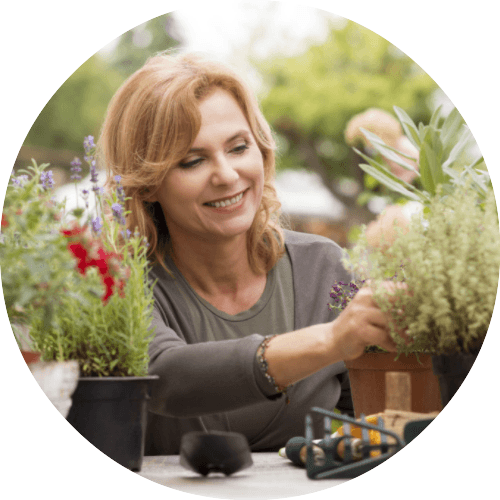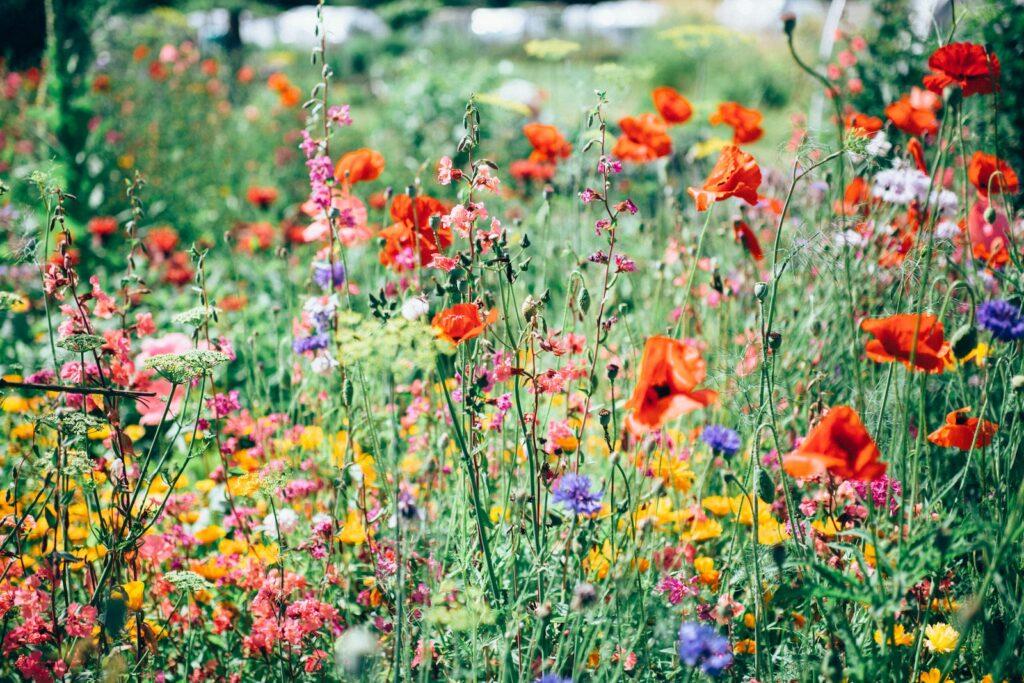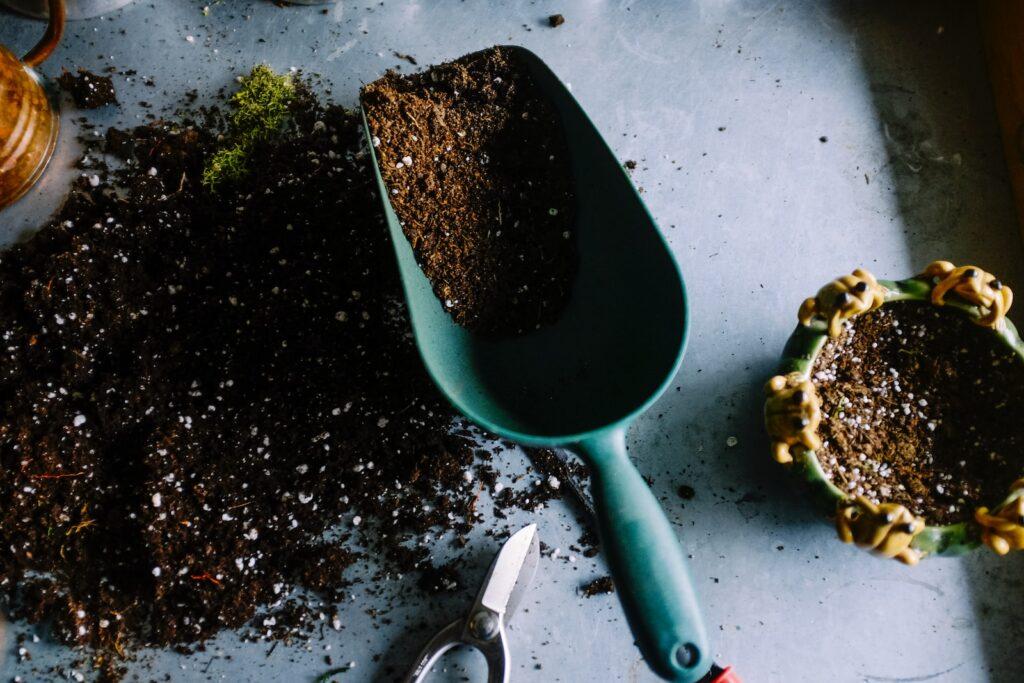Rated & Reviewed is reader-supported. When you buy through links on our site, we may earn an affiliate commission. Learn more.
Gardening is a rewarding and fulfilling hobby, but it can be challenging when you have limited space. However, with some creativity and smart planning, you can still enjoy a vibrant and productive garden even in a small area. In this article, we will explore various techniques and strategies for maximizing your small garden in limited spaces.

Assessing Your Space
Before diving into creating your small space garden, it is essential to assess the available area and understand its unique characteristics. By doing so, you can make informed decisions about plant selection and placement.
Start by determining the exact space you have for gardening. Measure the available area, including both ground space and any vertical surfaces like walls or railings. This will give you a clear idea of the physical limitations you need to work with.
Next, take note of the sunlight and shade patterns in your garden. Observe how the sunlight moves across the space throughout the day. This information is crucial for choosing the right plants that thrive in the available light conditions. Some plants require full sun exposure, while others can tolerate partial shade or even thrive in shade.
Once you have assessed the sunlight patterns, consider the microclimates within your garden. Evaluate if certain areas are more sheltered or exposed to wind or other elements. This understanding will help you decide where to place more delicate plants or take advantage of microclimates for specific types of plants.
By carefully assessing your space, you can make informed decisions about the types of plants that will thrive in your garden. Whether your space is a small balcony, a narrow strip along a fence, or a tiny backyard, understanding its limitations will enable you to maximize its potential and create a flourishing garden.
Remember, small space gardening requires thoughtful planning and strategic choices. With the right approach, you can transform even the tiniest areas into lush and productive gardens.
Choosing the Right Plants for a Small Garden
When it comes to small space gardening, selecting the right plants is crucial for maximizing your limited area’s potential. You want plants that not only fit within your space but also thrive and produce abundant yields. Here are some considerations for choosing the right plants for your small space garden:
1. Selecting compact and dwarf varieties
Opt for compact and dwarf varieties of plants that are naturally more suited for smaller spaces. These plants have been bred to grow in confined areas, making them ideal choices for containers, raised beds, or small garden patches. Look for keywords like “compact,” “bush,” or “dwarf” when shopping for seeds or seedlings.
For example, instead of regular-sized tomatoes, choose cherry or patio tomatoes that have a more compact growth habit. Similarly, opt for compact varieties of cucumbers, peppers, and eggplants that take up less space but still produce abundant harvests.
2. Prioritizing plants suitable for small spaces
Consider plants that are well-suited for small space gardening and have a high yield-to-space ratio. Leafy greens like lettuce, spinach, and kale are excellent choices as they can be grown close together and harvested frequently. Herbs like basil, mint, and thyme also grow well in limited spaces and can be easily incorporated into your cooking.
Additionally, consider fast-growing crops that have a shorter growing season, allowing you to maximize the use of your garden space throughout the year. Radishes, salad greens, and some varieties of beans and peas are quick-growing options that provide a continuous harvest.
Furthermore, explore vertical gardening options by choosing vining plants like cucumbers, peas, or pole beans. These plants can be trained to grow upwards using trellises or stakes, saving valuable ground space and adding visual interest to your garden.
By selecting compact and dwarf varieties and prioritizing plants suitable for small spaces, you can optimize your garden’s productivity. Remember to consider your climate, available sunlight, and soil conditions when choosing plants. With careful selection, you can enjoy a diverse and thriving garden in even the smallest of spaces.
Container Gardening
Container gardening is a fantastic option for small space gardens, allowing you to grow plants in pots, containers, or even repurposed items like buckets or crates. It offers flexibility and versatility, as you can position containers strategically to maximize sunlight and make efficient use of your available space. Here are some essential considerations for successful container gardening:
1. Selecting appropriate containers
When choosing containers for your small space garden, consider factors such as size, material, and drainage. Opt for containers that are proportionate to the plants you intend to grow, ensuring they have enough room for their roots to spread and access to adequate moisture and nutrients.
Plastic, ceramic, or wooden containers are commonly used for container gardening. Ensure they have drainage holes to prevent waterlogging, which can lead to root rot. If using repurposed items, make sure to create adequate drainage by drilling holes in the bottom.
2. Using vertical space efficiently
To maximize your small space garden, utilize vertical space effectively. Hanging baskets, wall-mounted planters, and tiered shelving units are great options for growing plants vertically. This technique not only saves space but also adds visual appeal to your garden.
Cascading plants like trailing vines, strawberries, or cherry tomatoes can be grown in hanging baskets or elevated planters. Consider installing hooks or brackets on walls, fences, or balcony railings to hang your containers securely.
In addition to hanging containers, vertical gardening can also involve using trellises or stakes to support climbing plants. Cucumbers, beans, peas, and certain varieties of tomatoes and squash can be trained to grow vertically, saving valuable ground space.
Remember to position your containers strategically to optimize sunlight exposure. Place sun-loving plants where they receive the most direct sunlight, while shade-tolerant plants can be positioned in areas with partial shade.
Container gardening opens up a world of possibilities for small space gardeners. It allows you to grow a wide range of plants, from herbs and flowers to vegetables and fruits, even in the smallest of spaces. With careful container selection and efficient use of vertical space, you can create a thriving and visually appealing garden that makes the most of your limited area.
Vertical Gardening
Vertical gardening is an excellent technique for maximizing space in small gardens. By utilizing walls, fences, and other vertical surfaces, you can increase your planting area and add a vertical dimension to your garden. Here are some effective strategies for vertical gardening in limited spaces:
1. Utilizing walls and fences for vertical gardens
Transforming your walls and fences into vertical gardens not only saves space but also adds beauty and greenery to your surroundings. Consider installing wall-mounted planters, vertical garden systems, or even creating your own DIY pocket planters using recycled materials.
Choose plants with a trailing or cascading growth habit, such as ivy, ferns, or creeping vines, to create a lush and visually appealing vertical garden on your walls or fences. These plants can soften the hard surfaces and add a touch of natural elegance to your small space.
2. Installing trellises and hanging baskets
Trellises and hanging baskets are practical solutions for growing climbing plants and trailing varieties. Install trellises against walls or fences to provide support for plants like cucumbers, beans, or vine tomatoes. This not only saves ground space but also makes it easier to harvest and maintain these plants.
Hanging baskets are another great way to maximize vertical space. They can be suspended from hooks, brackets, or overhead structures. Choose lightweight containers and fill them with trailing flowers, herbs, or even strawberries, adding a vibrant display of colors and textures to your small garden.
When installing trellises or hanging baskets, ensure they are securely anchored to avoid any accidents or damage caused by strong winds or heavy plants. Consider the weight and size of the plants you intend to grow, and use appropriate hooks and supports accordingly.
Vertical gardening is a practical and visually appealing technique for small space gardeners. It allows you to grow a variety of plants while maximizing your available space. Whether it’s creating a green wall or utilizing trellises and hanging baskets, vertical gardening adds a new dimension to your garden and expands your planting options.
Raised Bed Gardening
Raised bed gardening is an excellent solution for small spaces, offering several advantages such as improved soil quality, better drainage, and easier access for planting and maintenance. By building raised beds, you can optimize your gardening space and create a productive and manageable garden. Here’s what you need to know about raised bed gardening in limited spaces:
1. Building raised beds for small spaces
Raised beds can be constructed using various materials such as wood, bricks, or concrete blocks. The advantage of raised beds is that you can customize their size and shape according to your available space. In small gardens, opt for narrower beds to make the most of your area.
Consider the height of the raised beds as well. A height of around 12 to 18 inches is ideal, as it allows for ample root growth while making it easier to tend to your plants. Higher beds also provide better accessibility, especially if you have mobility issues.
2. Soil selection and preparation
One of the major benefits of raised bed gardening is the ability to control the quality of your soil. Fill your raised beds with a well-balanced mix of soil, compost, and organic matter. This ensures a nutrient-rich environment for your plants to thrive.
Before filling your raised beds, remove any existing vegetation or grass from the area. Then, loosen the soil underneath and remove any rocks or debris. This prepares the ground for the raised beds and prevents weed growth.
To maintain good soil health, periodically amend the soil with compost or organic matter, as raised beds can drain more quickly and require regular replenishment of nutrients.
Raised bed gardening is not only practical but also visually appealing. The defined borders of the beds can add structure and organization to your small garden. Additionally, raised beds can allow for easier weed control and reduce the risk of soil compaction.
With raised bed gardening, you can efficiently utilize your limited space, creating a productive and visually appealing garden. The controlled environment of raised beds makes it easier to manage soil quality and maximize plant growth, resulting in a thriving garden in even the smallest of spaces.
Companion Planting
Companion planting is a strategic gardening practice that involves growing plants together based on their beneficial relationships. This technique is especially valuable in small space gardens where every inch of planting area counts. By combining compatible plants, you can maximize your garden’s productivity and create a harmonious growing environment. Here’s how to make the most of companion planting in your small garden:
1. Maximizing space by combining compatible plants
Companion planting allows you to make efficient use of your limited space by pairing plants that have complementary growth habits. For example, you can grow tall and vining plants, like pole beans or cucumbers, alongside vertical structures such as trellises or fences. This way, you utilize vertical space while allowing shorter plants to thrive beneath.
Additionally, intercropping involves growing quick-maturing crops between rows of slower-growing vegetables. For instance, you can sow lettuce, radishes, or spinach between rows of tomatoes or peppers. This technique maximizes space by utilizing the gaps between larger plants, resulting in a more diverse and productive garden.
2. Beneficial plant combinations for small gardens
Certain plant combinations have natural synergies that benefit each other in terms of pest control, pollination, and nutrient absorption. Some popular companion plant combinations for small gardens include:
- Marigolds and tomatoes: Marigolds repel pests like nematodes and aphids, which can harm tomatoes.
- Basil and peppers: Basil enhances the flavor of peppers and helps repel pests like aphids and mosquitoes.
- Carrots and onions: Onions repel carrot flies, while carrots help suppress weeds around onion plants.
- Nasturtiums and cucumbers: Nasturtiums act as a trap crop, attracting aphids away from cucumber plants.
- Beans and corn: Beans can climb up cornstalks, utilizing vertical space, while fixing nitrogen in the soil, benefiting both plants.
By strategically combining companion plants, you can create a more balanced and harmonious garden ecosystem. The beneficial interactions between plants can help deter pests, improve pollination, and enhance nutrient uptake, resulting in healthier and more productive plants.
Companion planting is a valuable technique for small space gardens, allowing you to maximize productivity and create a well-balanced garden. Experiment with different plant combinations and observe the positive effects on your plants’ growth and overall garden health.
Succession Planting
Succession planting is a technique that involves staggering the planting of crops to ensure a continuous harvest and make the most of your small space garden throughout the growing season. By planning and timing your plantings strategically, you can maximize the productivity of your garden and enjoy a steady supply of fresh produce. Here’s how to implement succession planting in your small garden:
1. Extending growing seasons with successive plantings
Succession planting allows you to extend your growing seasons by planting crops in multiple stages. Instead of planting all your seeds or seedlings at once, stagger the plantings at regular intervals. For example, if you have limited space for lettuce, sow a small batch of seeds every two weeks. This way, you’ll have a continuous harvest of fresh lettuce leaves rather than a single crop all at once.
Consider the average maturity time for each crop and plan accordingly. Start with cool-season crops early in the season and transition to warm-season crops as temperatures rise. This ensures that your garden remains productive throughout the entire growing season.
2. Planning crop rotations for continuous harvests
Crop rotation is another essential aspect of succession planting. Rotate crops by planting different vegetable families in the same space year after year. This helps prevent the buildup of pests and diseases specific to certain plant families.
For example, if you grew tomatoes in a particular area this year, plant a different crop family in that space next year, such as leafy greens or root vegetables. This reduces the risk of diseases and pests that may have affected the previous crop.
When planning your succession plantings, consider the specific requirements of each crop, such as sunlight, soil type, and water needs. Optimize your small garden space by selecting crops that can follow each other in the same bed or container, ensuring efficient use of resources and maximizing your harvest potential.
Succession planting allows you to make the most of your limited space by continuously planting and harvesting throughout the growing season. By staggering your plantings and rotating crops, you ensure a steady supply of fresh produce and maintain the health of your garden.
Utilizing Creative Techniques
In small space gardening, it’s essential to think creatively and utilize every available area for planting. By employing innovative techniques, you can maximize your garden’s productivity and make the most of even the smallest spaces. Here are some creative strategies to consider:
1. Intercropping and interplanting strategies
Intercropping involves growing multiple crops in the same space simultaneously. By selecting plants with different growth habits, nutrient requirements, and root depths, you can optimize your garden’s productivity. For example, planting quick-growing radishes between rows of slower-growing cabbage not only maximizes space but also helps deter pests.
Interplanting refers to growing complementary plants together, where one plant may provide benefits to the other. For instance, planting aromatic herbs like basil or mint alongside susceptible plants can help repel pests. Similarly, planting flowers like marigolds or calendula throughout your garden can attract pollinators and beneficial insects.
2. Utilizing windowsills and balcony spaces
Don’t overlook the potential of windowsills and balconies for small space gardening. These areas can be utilized to grow herbs, small vegetables, or flowers in containers. Choose compact varieties that thrive in limited sunlight and are suitable for container gardening.
Consider vertical options like vertical wall planters or hanging baskets to make the most of these spaces. You can grow herbs, strawberries, or trailing flowers like petunias or nasturtiums, adding beauty and functionality to your windowsills or balcony.
Additionally, explore the possibility of using hanging or vertical herb gardens indoors. This allows you to have fresh herbs readily available for cooking, even in the smallest of spaces.
By incorporating intercropping, interplanting, and utilizing windowsill and balcony spaces, you can maximize your small space garden’s potential. These creative techniques not only optimize productivity but also enhance the aesthetic appeal of your garden.
Maintaining and Caring for Your Small Garden
Proper maintenance and care are crucial for the success of your small space garden. While limited in size, your garden still requires attention to ensure healthy plant growth and bountiful harvests. Here are some essential considerations for maintaining and caring for your small garden:
1. Watering and fertilizing considerations
Water your plants consistently and deeply, ensuring the soil is moist but not waterlogged. In small gardens, it’s important to monitor moisture levels closely as containers and raised beds can dry out quickly. Consider using drip irrigation or self-watering systems to ensure efficient water usage and minimize evaporation.
Fertilize your plants regularly to provide them with essential nutrients. Select a balanced, slow-release fertilizer or opt for organic options like compost or worm castings. Follow the recommended application rates for each plant type and avoid over-fertilization, which can lead to nutrient imbalances or burn the plants.
2. Pruning, pest control, and overall maintenance tips
Regularly inspect your plants for signs of pests, diseases, or nutrient deficiencies. Prune any dead or damaged plant parts to encourage healthy growth and prevent the spread of diseases. Proper air circulation is especially important in small gardens, so prune overcrowded plants to allow for better airflow and reduce the risk of fungal infections.
Implement natural pest control methods like handpicking pests, using insecticidal soaps or neem oil sprays, or attracting beneficial insects to your garden. Regularly monitor for any signs of pests and take immediate action to prevent infestations.
Keep your garden tidy by removing weeds regularly. Weeds compete with your plants for nutrients and can quickly take over small spaces. Mulching around your plants can help suppress weed growth and conserve moisture in the soil.
Regularly monitor your plants for signs of nutrient deficiencies and adjust your fertilization routine accordingly. Additionally, stake or support plants that require it to prevent them from bending or breaking under their weight.
By providing proper care and maintenance to your small garden, you ensure healthy plant growth, prevent pest and disease issues, and maximize your harvests.
FAQs
Can I grow vegetables in a small space garden?
Absolutely! Small space gardening is perfect for growing vegetables. Opt for compact varieties and utilize techniques like container gardening, vertical gardening, and succession planting to maximize your vegetable yields.
What are the best plants for small space gardens?
The best plants for small space gardens are those that are compact, dwarf varieties or can be grown vertically. Some popular choices include herbs like basil and mint, salad greens, cherry tomatoes, peppers, beans, and strawberries.
Do I need special soil for small space gardening?
While not necessarily special, using well-draining and nutrient-rich soil is essential for small space gardening. Consider amending your soil with compost or organic matter to provide the necessary nutrients for your plants’ growth.
How much sunlight do plants in small gardens need?
The amount of sunlight required depends on the specific plant. Generally, most vegetables and herbs require at least 6 hours of direct sunlight per day. However, some shade-tolerant plants can thrive with partial sun or dappled shade.
Can I grow flowers in a small space garden?
Absolutely! Flowers can add beauty and attract pollinators to your small space garden. Choose compact flowering plants like marigolds, petunias, pansies, or nasturtiums that thrive in containers or small garden beds.
What are the advantages of raised bed gardening in small spaces?
Raised bed gardening provides better soil drainage, improved soil quality, and easy access for planting and maintenance. It also helps prevent soil compaction and allows for better control over pests and diseases.
How often should I water my small space garden?
The frequency of watering depends on various factors such as weather conditions, plant types, and container size. Generally, small gardens require regular watering, and it’s essential to keep the soil consistently moist but not waterlogged.
How can I control pests in my small garden without using harmful chemicals?
Natural pest control methods include handpicking pests, using insecticidal soaps or neem oil sprays, attracting beneficial insects, and maintaining good garden hygiene by removing weeds and debris.
Can I grow a small space garden indoors?
Yes, you can! Indoor gardening is a great option for small spaces. Choose plants that thrive in low-light conditions and use containers, hanging baskets, or vertical systems to maximize your indoor gardening space.
What are some low-maintenance plants for small space gardens?
Some low-maintenance plants for small space gardens include succulents, herbs like rosemary or thyme, and resilient flowers like zinnias or geraniums. These plants require minimal care and can thrive in various growing conditions.
Wrapping It Up
Small space gardening offers a world of possibilities for those with limited gardening areas. By utilizing techniques such as container gardening, vertical gardening, raised bed gardening, companion planting, succession planting, and creative strategies, you can maximize your garden’s potential and enjoy a bountiful harvest.
Through careful planning and selection of suitable plants for small spaces, you can create a thriving garden that not only provides fresh produce but also enhances the beauty of your surroundings. Whether you have a small balcony, a tiny backyard, or just a windowsill, there are plenty of options to turn your space into a green oasis.
Remember to assess your available space, consider sunlight patterns, and choose plants that are well-suited for smaller areas. Use containers effectively, make use of vertical space, and intercrop or interplant strategically to maximize your planting area. Implementing techniques like raised bed gardening, companion planting, and succession planting will help you optimize your garden’s productivity and ensure a continuous harvest.
Maintaining your small garden with proper watering, fertilizing, pruning, pest control, and overall care is crucial for the success of your plants and the health of your garden.
Embrace the creativity and challenges that come with gardening in limited spaces. With determination, resourcefulness, and a touch of green thumb, you can transform even the smallest of areas into a vibrant and productive garden.
So, whether you’re growing herbs, vegetables, or flowers, dive into the world of small space gardening and reap the rewards of your efforts. Enjoy the beauty, flavors, and satisfaction that come from cultivating your own oasis, even in the tiniest of spaces.
Happy gardening!
Amazon and the Amazon logo are trademarks of Amazon.com, Inc, or its affiliates.


